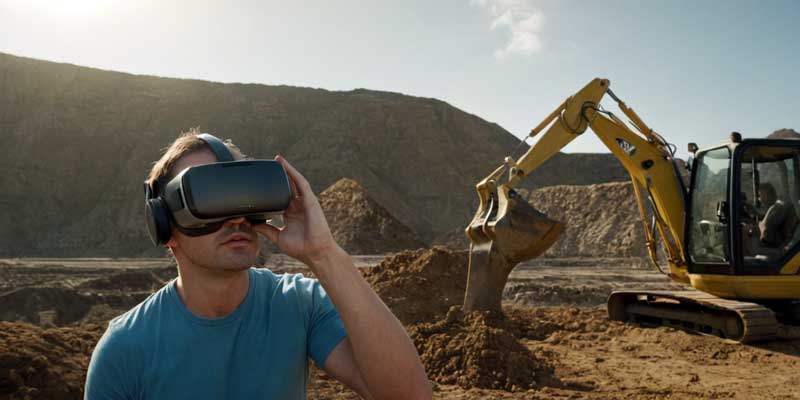Virtual Reality (VR) has revolutionized various fields, from medicine to engineering. However, one sector where this technology has had a profound impact is in training heavy machinery operators. This article explores how VR is transforming training processes, the benefits it offers, and how it has become accessible to companies of all sizes.
What is VR Training for Heavy Machinery?
VR training for heavy machinery involves advanced simulators that replicate the operation of equipment like excavators, cranes, and bulldozers in virtual environments. These simulators allow operators to learn how to handle machinery while introducing realistic scenarios, such as adverse weather conditions or challenging terrains.
This marks a significant shift from traditional methods that require physical use of machinery and depend on controlled conditions for practice.

Key Benefits of VR Training
Implementing VR in heavy machinery training offers numerous advantages:
1. Increased Operator Safety
Simulators allow trainees to practice in completely safe environments, eliminating the risk of accidents during training. This approach is particularly useful for learning how to operate machinery in hazardous situations, such as landslides or storms.
2. Cost Reduction
One major benefit of VR is the elimination of costs associated with the physical use of machinery, such as fuel, maintenance, and wear and tear. Your insight perfectly highlights this:
“The costs of training are reduced because there’s no fuel usage, and operators can train as much as necessary with VR.”
This cost-saving aspect is significant for smaller businesses or regions with limited resources.
3. Accessibility and Flexibility
Initially, VR simulators were tools exclusive to large corporations. However, advancements in graphics processing and reduced technology costs have democratized access. Today, even small businesses can adopt this technology to train employees.
“Technological advancements over the past 20 years have made VR accessible to various engineering fields, enabling its use in training everything from doctors to heavy machinery operators.”
4. Training in Multiple Scenarios
VR can recreate realistic environments with varying weather conditions and terrains. This ensures that operators are prepared to work in any situation without needing to experience these scenarios firsthand during training.
“Operators can learn to handle machinery not only in normal environments but also under variable weather conditions.”
5. Real-Time Feedback and Metrics
VR simulators provide detailed performance analysis, identifying areas for improvement and enabling personalized adjustments in training programs.
Don’t forget, we also offer a wide range of spare parts for heavy machinery, so feel free to inquire about any replacement needs you may have. Just click on contact us.
Practical Applications of VR in Heavy Machinery
VR training not only enhances learning but also optimizes operations and promotes continuous skill development:
- Construction: Training operators to handle cranes in dense urban areas or complex construction sites.
- Mining: Simulating tunnels or underground mines where errors can have severe consequences.
- Agriculture: Managing agricultural machinery in uneven terrains and extreme weather conditions.
- Logistics: Using forklifts and loading equipment in warehouses.
How to Implement VR Training in Your Business
If you’re considering integrating VR for heavy machinery training, follow these steps:
- Choose a reliable provider: Companies like Sanlab, Luminous XR, and Simmersiv offer specialized simulators for diverse needs.
- Define training goals: Determine the specific skills and scenarios you want to include in the program.
- Train your instructors: Ensure supervisors understand how to use simulators and analyze learning outcomes.
- Measure the impact: Monitor operator performance before and after training to evaluate ROI.
The Future of VR Training
Virtual reality will continue to evolve, incorporating artificial intelligence and adaptive learning to create even more realistic simulations. This will open new opportunities for businesses of all sizes, helping them train employees more safely, efficiently, and economically.
As you pointed out, what was once exclusive to large corporations is now accessible to many more industries:
“Access to this technology has enabled its use in training everything from doctors to heavy machinery operators.”
The use of VR in heavy machinery training not only reduces costs and enhances safety but also provides an immersive and effective learning experience. As this technology continues to advance, it will become an essential tool for preparing operators to face any challenge in the workplace.Practical Applications of VR in Heavy Machinery
